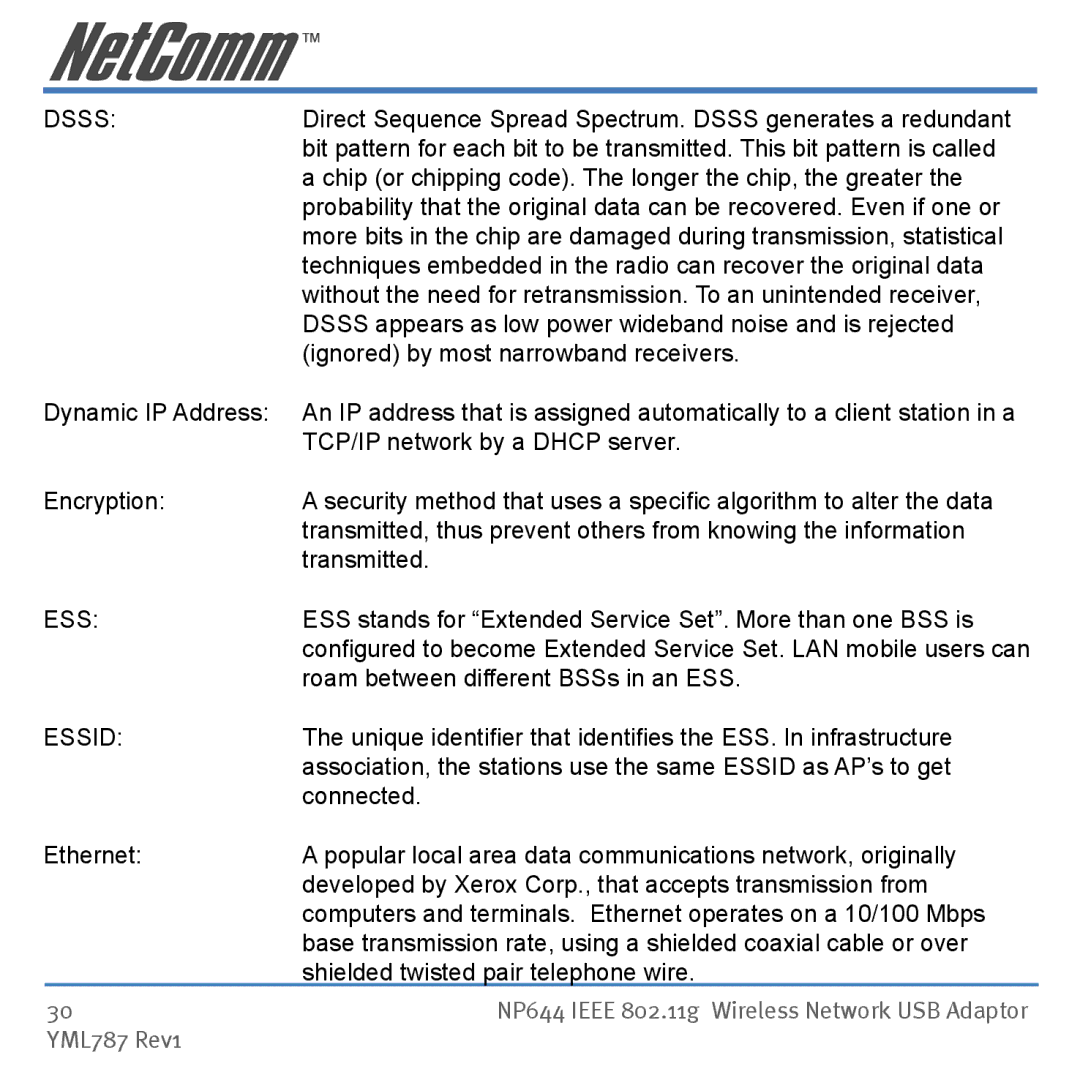DSSS: | Direct Sequence Spread Spectrum. DSSS generates a redundant |
| bit pattern for each bit to be transmitted. This bit pattern is called |
| a chip (or chipping code). The longer the chip, the greater the |
| probability that the original data can be recovered. Even if one or |
| more bits in the chip are damaged during transmission, statistical |
| techniques embedded in the radio can recover the original data |
| without the need for retransmission. To an unintended receiver, |
| DSSS appears as low power wideband noise and is rejected |
| (ignored) by most narrowband receivers. |
Dynamic IP Address: | An IP address that is assigned automatically to a client station in a |
| TCP/IP network by a DHCP server. |
Encryption: | A security method that uses a specific algorithm to alter the data |
| transmitted, thus prevent others from knowing the information |
| transmitted. |
ESS: | ESS stands for “Extended Service Set”. More than one BSS is |
| configured to become Extended Service Set. LAN mobile users can |
| roam between different BSSs in an ESS. |
ESSID: | The unique identifier that identifies the ESS. In infrastructure |
| association, the stations use the same ESSID as AP’s to get |
| connected. |
Ethernet: | A popular local area data communications network, originally |
| developed by Xerox Corp., that accepts transmission from |
| computers and terminals. Ethernet operates on a 10/100 Mbps |
| base transmission rate, using a shielded coaxial cable or over |
| shielded twisted pair telephone wire. |
30 | NP644 IEEE 802.11g Wireless Network USB Adaptor |
YML787 Rev1 |
|
